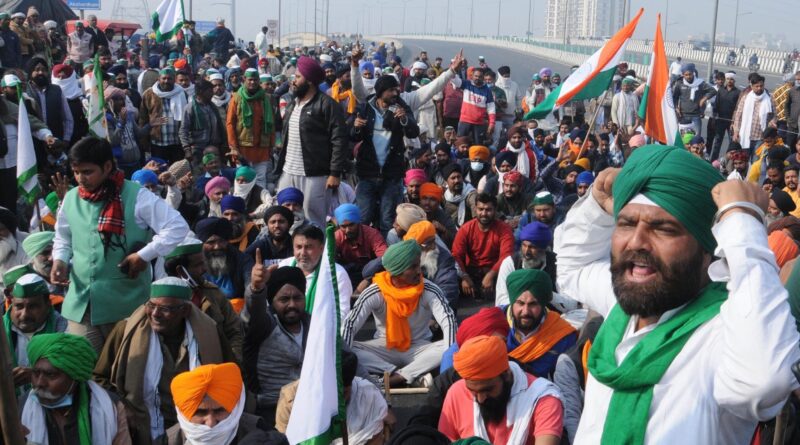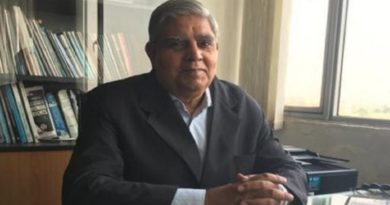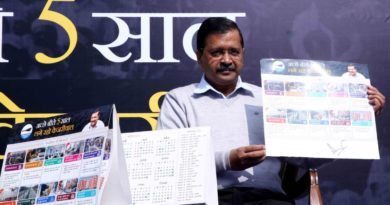Farm income crisis
Ebangla Bureau
By Shivaji Sarkar
Farmers have been protesting for the past many years for remunerative MSP, fair incomes and related issues as solutions elude them. Since 2012, in the recent past, the country has seen many long marches from Maharashtra, MP, UP, agitations in Tamil Nadu and many other parts. Poll after polls it has rocked the Indian polity. The protest demands typically had been for – proper prices for farm produce, ensured income, loan waivers, high electricity bills and fuel prices, junking of pollution lobby-created bogey of scrapping of tractors and proper procurement by the government agencies. Now the pollution lobby created ordinance on stubble (parali) burning that invites jailing and a fine of Rs 1 crore has been added.In 2018, Bharatiya Kisan Union, which is now also in the forefront along with 32 other groups, had blocked UP highways and stormed Delhi borders on with Kisan Kranti March with two simple demands – low minimum support prices (MSP) and high fuel prices to culminate in the Capital and neighborhood on October 2, Gandhi Jayanti, 2018. Reports said that 70,000 farmers had laid seize of the Capital.The Delhi March had been preceded by many protests across state capitals starting with the ‘Long March’ by All India Kisan Sabha of CPI-M on 12 March 2018 in Mumbai to gherao the Maharashtra Vidhan Sabha. Since the assurances were not fulfilled on 27 February, 2019 another long march had commenced. In fact, there have been numerous farmer protests – small and large – since 2016. There was the long dharna (agitation) by Tamil Nadu farmers in 2017 in Delhi. Then there was the death of five protesting farmers in police firing in June 2017 at Mandsaur, Madhya Pradesh. These have been only a few of the many agitations that have taken place across the country in recent years. The agitations since 2012, though the previous decade also saw many Kisan movements and a large number of suicides, led to renaming of the Department of Agriculture & Cooperation has been renamed Department of Agriculture, Cooperation and Farmers Welfare.
The State of Indian Agriculture 2015-16 (SIA15) of Ministry of Agriculture says in its preface, “in recent years the agriculture and allied sector has been facing numerous challenges. The sector remains constrained by low productivity, excessive dependence on monsoon and weather conditions, continuing fragmentation of land and preponderance of fragmented markets. A combination of these factors has led to episodes of agrarian distress which have been widely reported”. The report adds that as a natural consequence of economic growth structural changes in the economy, the share of agriculture and allied sectors in the total GDP declined from around 19 percent in 2004-05 to 14 percent in 2013-14, calculated 2004-05 constant prices. If the share of forestry and fishing are removed, agriculture (including livestock) accounted for about 12 percent of the national GDP. However, with over 50 percent of the population still dependent on agriculture for its livelihood, the sector continues to play a vital role through its multiplier impact on the economy. It also notes that the annual average growth rate in the sector declined from 5 percent in 2004-2008 to 3 percent during 2008-09 and 2013-14, when economy was growing between 9 and 7 percent. It also notes that volatility in economy but higher instability and unpredictability in agriculture. Former deputy RBI governor RK Hazari, in 2013, says that the agrarian conflict is growing for a new equilibrium even as one gets disequilibrium and even disorder. Despite many welfare schemes of cash payments, direct benefits, monthly pension since 2016 by the Narendra Modi government, the discontent could not subside.
The hasty steps of the Modi government by June 5, 2020 ordinances and subsequent laws in the parliament’s monsoon session for an ostensible bettering of the situation are being seen by farmers as against their interest and apprehension of creating corporate monopolies. Farmers fear that in the next few years the corporate stranglehold would increase and they would be left to their mercy as they see the government withdrawing either from ensuring MSP or the existing mandi markets. The SIA15 report explains this as “the preponderance of small and marginal holdings making the high volatility even more worrisome for policy makers, as small and marginal farmers are highly vulnerable to adverse climatic conditions”. The report was a sequel to severe drought during the previous two years, 2014 and 2015. It mentions that as jobs in other sectors grow, dependence on farm sector reduces. The recent agitation may have links to the severe job losses in all sectors and consequent larger dependence and distress in the farm and rural sectors, including rural non-farm activities, since 2018. Definitely the unprecedented kneejerk lockdown of all economic activities aggravated it. The policy dilemma is obvious. The government being in a cash crunch, economy slowing down since 2018, and severe revenue losses during the lockdown and other problems has put official mechanism in a tight spot. Job losses and contraction of wages have added to demand crisis. Farms are an important sector as official statistics say 54 percent are dependent on agriculture. This cannot be ignored but the government is not in a position to give the necessary importance. So, despite the increase in MSP it is not at 1.5 percent of the C2 – comprehensive cost including imputed rent and interest on owned land and capital, as recommended by the Swaminathan committee. In 2015, the Centre filed an affidavit in the Supreme Court that they could not increase the MSP to 1.5 times the cultivation cost because it would lead to ‘market distortions. Another reason is the commitments to WTO as noted by ministries of consumer affairs, food and public distribution, commerce and industry and finance. Agriculture ministry dismissed it and increased MSPs in 2018, 2019, and September 21, 2020. But the new farm laws have led to suspicion among the farmers leading to the demand of scrapping of the three farm laws. It is a fact that most farmers, 90 percent, sell produces below MSPs. NITI Ayog notes declining farmer incomes since 2011-12.The present talks with farmers may bring a temporary truce but the politics will continue to hot up till a plausible farm-oriented policy solution is found.




